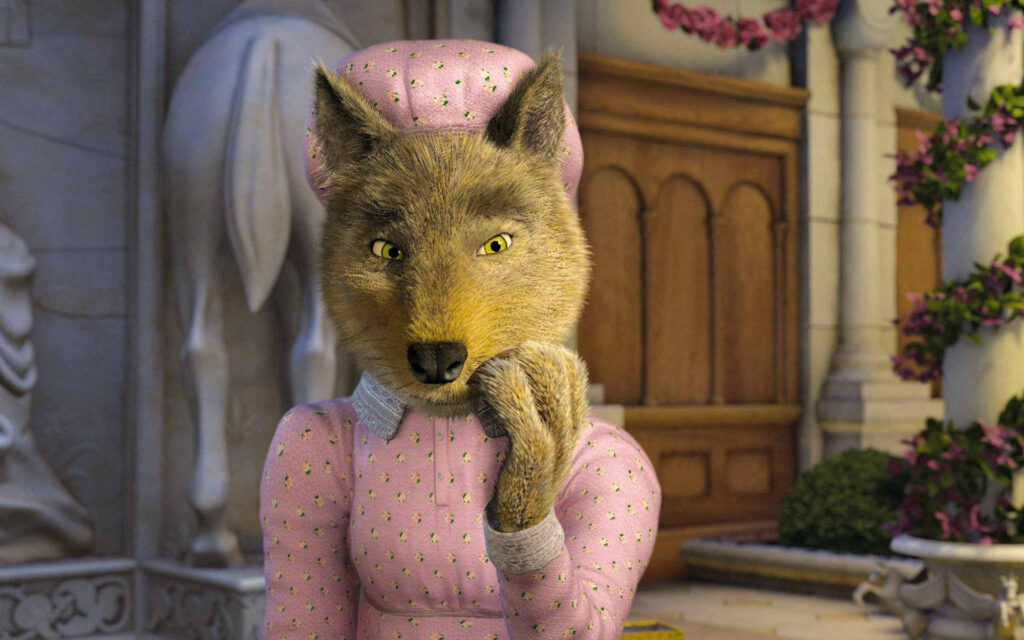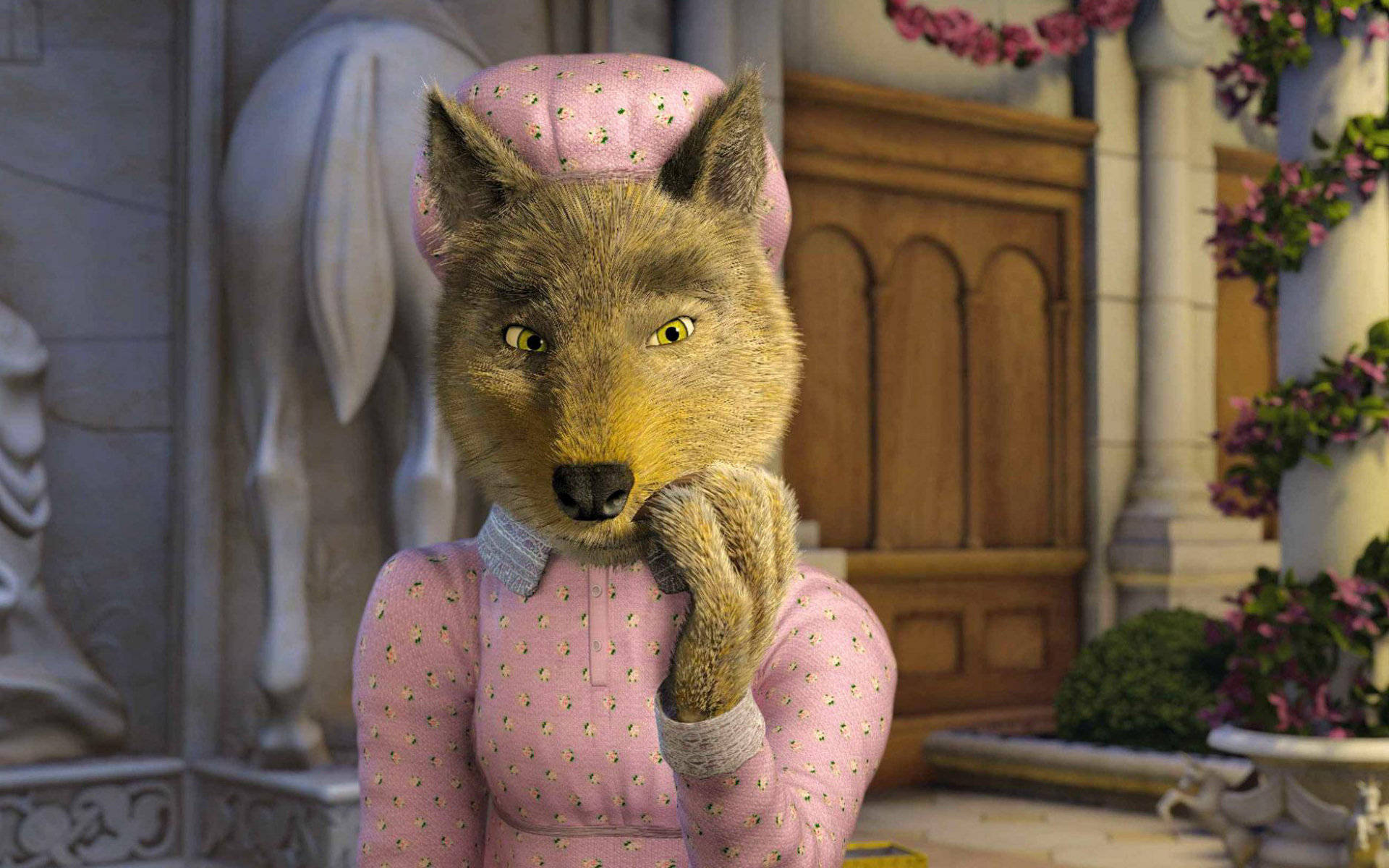
The Elusive Wolf in Shrek: Unmasking the Fairy Tale Fauna
The Shrek franchise, renowned for its satirical take on fairy tales, populates its world with a vibrant cast of reimagined storybook characters. While primary figures like Shrek, Fiona, Donkey, and Lord Farquaad dominate the spotlight, a myriad of supporting characters contribute to the franchise’s rich tapestry. Among these, the presence of the wolf in Shrek, though subtle, warrants a closer look. This article delves into the wolf’s role, analyzing its significance within the narrative and exploring its potential interpretations.
The Wolf’s Appearances: A Background Player
The wolf in Shrek isn’t a central character boasting extensive screen time. Instead, it makes fleeting appearances, primarily within the context of other, more prominent fairy tale figures. One of its most notable appearances is alongside the Three Little Pigs. Evicted from their homes by Lord Farquaad’s decree, these characters, including the wolf, seek refuge in Shrek’s swamp. This initial scene establishes the wolf as one of many displaced fairy tale creatures, victims of Farquaad’s ambition to create a perfect, fairytale-free kingdom. The scene highlights the indiscriminate nature of Farquaad’s actions, affecting both “good” and “bad” characters from classic tales.
Further appearances of the wolf in Shrek are often as part of a larger group of fairy tale characters, seen congregating in various locations throughout the films. These appearances, though brief, reinforce the idea that the wolf is integrated into this reimagined fairy tale universe, albeit in a minor role. He is a part of the collective displaced by Farquaad, a face in the crowd of fairytale figures who have been uprooted by the ambition of a power-hungry lord.
Analyzing the Wolf’s Role: Beyond the Big Bad Stereotype
Traditional fairy tales often portray the wolf as a menacing antagonist, a symbol of danger and deception. Think of the Big Bad Wolf huffing and puffing in “The Three Little Pigs,” or disguising himself as Little Red Riding Hood’s grandmother. However, the wolf in Shrek subverts this established stereotype. Instead of being a fearsome predator, it’s presented as a refugee, a victim of circumstance. This subversion is consistent with Shrek’s overall theme of challenging preconceived notions and celebrating the unconventional. The film encourages viewers to look beyond superficial appearances and consider the complexities of characters, regardless of their established roles in classic literature.
The wolf in Shrek’s appearance also raises questions about morality and the nature of “good” and “evil” within the fairytale world. Is the wolf inherently bad, or is it simply a product of its environment and predetermined narrative? By portraying the wolf as a displaced individual seeking shelter, Shrek challenges the audience to reconsider the traditional black-and-white morality often found in fairy tales. The wolf becomes a symbol of the marginalized, those who are unfairly judged based on their pre-existing reputations.
The Significance of Subverting Expectations
The decision to depict the wolf in Shrek as a non-threatening character is significant for several reasons. Firstly, it contributes to the franchise’s overall comedic tone. By taking familiar characters and placing them in unexpected situations, Shrek generates humor and appeals to a broad audience. The sight of the wolf, traditionally a figure of fear, standing alongside other displaced fairy tale characters, creates a sense of absurdity and reinforces the film’s satirical nature.
Secondly, the subversion of the wolf stereotype reinforces the film’s message of acceptance and inclusivity. Shrek celebrates diversity and challenges viewers to embrace those who are different. By portraying the wolf as a sympathetic character, the film encourages viewers to look beyond outward appearances and recognize the inherent worth of all individuals, regardless of their background or reputation. The presence of the wolf, therefore, becomes a subtle yet powerful statement about the importance of judging individuals on their own merits, rather than relying on preconceived notions.
The Wolf and the Broader Themes of Shrek
The wolf in Shrek, though a minor character, reflects the broader themes of the franchise. Shrek consistently challenges traditional fairy tale tropes, questioning established narratives and promoting alternative perspectives. The film celebrates the unconventional and encourages viewers to embrace their individuality. The presence of the wolf as a non-threatening character aligns with this overarching message, reinforcing the idea that appearances can be deceiving and that even the most traditionally villainous characters can possess unexpected qualities.
Furthermore, the wolf’s displacement mirrors the experiences of other characters in the film, particularly Shrek himself. Shrek, an ogre, is initially ostracized and feared by the human population due to his appearance. However, as the story unfolds, he proves to be a kind and compassionate individual. Similarly, the wolf, traditionally a symbol of danger, is presented as a victim of circumstance, seeking refuge and acceptance. This parallel between Shrek and the wolf reinforces the film’s message of empathy and understanding.
The Enduring Appeal of Shrek: A Fairy Tale Reimagined
The Shrek franchise has resonated with audiences worldwide due to its clever writing, memorable characters, and its willingness to challenge established conventions. The inclusion of characters like the wolf in Shrek, subtly subverting expectations, contributes to the franchise’s enduring appeal. By taking familiar fairy tale figures and reimagining them in unexpected ways, Shrek creates a world that is both familiar and surprising, offering a fresh perspective on classic stories.
The success of Shrek lies in its ability to appeal to both children and adults. Children are drawn to the colorful characters and humorous storylines, while adults appreciate the film’s satirical commentary and its exploration of complex themes. The wolf in Shrek, though a minor character, plays a role in this dynamic, contributing to the film’s overall depth and its ability to resonate with a diverse audience. [See also: Shrek’s Influence on Animated Films] The presence of the wolf is a reminder that even the smallest details can contribute to the overall impact of a story.
Conclusion: The Wolf’s Quiet Contribution
In conclusion, while the wolf in Shrek may not be a central character, its presence is far from insignificant. Its portrayal as a displaced refugee subverts traditional fairy tale stereotypes, contributing to the franchise’s overall message of acceptance and challenging preconceived notions. The wolf’s story, though subtle, reinforces the film’s themes of empathy, understanding, and the importance of judging individuals on their own merits. Therefore, the next time you watch Shrek, pay close attention to the wolf – a seemingly minor character who quietly contributes to the film’s enduring appeal and its powerful message.
The understated presence of the wolf in Shrek serves as a microcosm of the film’s larger thematic concerns. It underscores the idea that even seemingly insignificant characters can contribute to a narrative’s depth and meaning. The wolf, therefore, stands as a testament to Shrek’s clever writing and its ability to find humor and heart in the most unexpected places. The legacy of the wolf in Shrek is a silent but important one.

